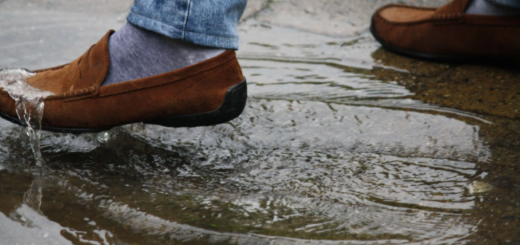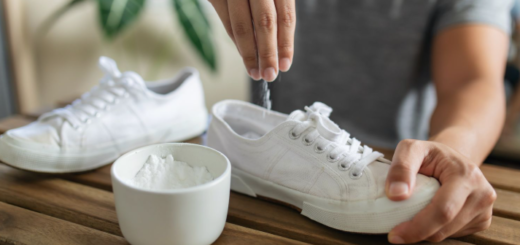How to Keep Leather Shoes Looking New: 6 Easy Steps for Long-Lasting Style
Leather shoes are an investment in both style and quality. Whether you’re wearing a sharp pair of dress shoes to a formal event or sporting classic leather loafers for everyday wear, these shoes demand thoughtful care. Unlike synthetic materials, leather is natural and therefore susceptible to changes in climate, moisture, and daily wear. That means they require more than just occasional cleaning to preserve their rich appearance and long-term durability.
If you want to keep your leather shoes looking as good as new, there are several important habits you should develop. Let’s dive into a practical six-step routine that will help you maintain their beauty and structure for years to come.
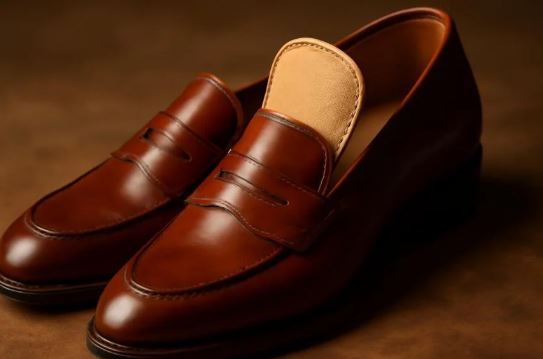
Why Leather Needs Attention and Consistent Care
Leather is not just another fabric—it’s a breathable, porous material derived from animal hide. Because of this, it’s sensitive to external factors like water, heat, and dirt. Left unattended, leather can dry out, lose its flexibility, and develop unsightly cracks or permanent stains. That elegant sheen you love can quickly fade if you don’t take the right steps to protect it.
Treating your leather shoes properly does more than improve their appearance—it also adds years to their life. From everyday scuffs to seasonal weather changes, the right care methods can guard against common types of damage.
Step 1: Remove Dirt and Build-Up with Routine Cleaning
Every time you wear your leather shoes, they collect dirt, dust, and grime—even if it’s not always visible. Without frequent cleaning, this debris can break down the surface of the leather and dull its natural luster.
To clean your shoes effectively, begin by brushing away surface dirt using a soft-bristled brush or microfiber cloth. Avoid using rough or abrasive materials that might scratch the leather.
For a deeper clean, use a pH-balanced leather cleaner that’s made specifically for footwear. Dampen a clean cloth, apply a small amount of the cleaner, and massage it into the shoe in circular motions. Afterward, wipe away any excess product with a fresh cloth. If your shoes are exposed to harsh environments often—such as muddy golf courses or city streets—it’s a good idea to clean them after each wear.
Step 2: Restore Moisture by Conditioning the Leather
Think of conditioning as applying moisturizer to your shoes. Over time, leather naturally loses oils and moisture, especially when exposed to the sun, dry air, or water. Without proper conditioning, the material can become brittle and prone to cracks.
To keep the leather soft and flexible, apply a leather conditioner once every few weeks—or more frequently if the shoes are used often. Choose a high-quality product formulated for fine leather, and steer clear of generic lotions or oils that might stain or degrade the surface.
Rub a small amount of conditioner into the leather using a clean cloth, focusing on areas that appear dry or dull. Let the product absorb fully before wearing the shoes again. Well-conditioned leather feels smooth, looks rich, and resists wear much better than neglected leather.
Step 3: Restore Shine and Strength with Polishing
Polishing leather shoes isn’t just about achieving that mirror-like shine—it also adds an extra barrier of protection. Regular polishing reinforces the leather’s surface, defending it against scuffs, water, and minor stains.
Select a polish that matches your shoe color, or use a neutral one for versatility. Cream-based polishes nourish the leather and enhance color, while wax-based formulas create a shinier, more durable finish.
Apply a small dab of polish with a soft cloth or applicator brush and work it into the leather in circular movements. Allow the polish to set for a few minutes. Once dry, buff the shoe with a horsehair brush or a separate cloth to reveal a smooth, radiant finish. Polishing every couple of weeks will keep your shoes looking vibrant and shielded from daily hazards.
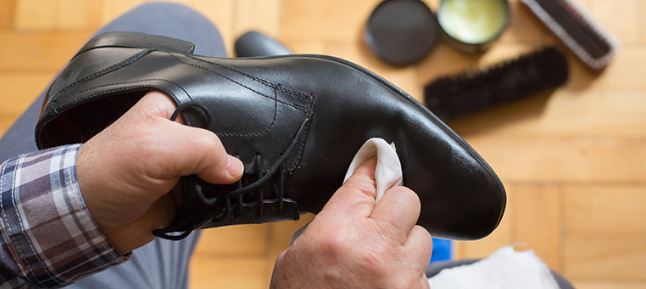
Step 4: Safeguard Against Moisture with Waterproofing
Even a small splash of water can leave an unsightly mark on untreated leather. Moisture can weaken the fibers, cause discoloration, and even create mildew in extreme cases. Waterproofing your shoes is a smart step to prevent this type of damage, especially if you live in a rainy or snowy climate.
Use a leather-safe waterproofing spray that’s specifically designed for shoes. Avoid silicone-based products, which may seal the leather too tightly and affect its breathability. Always test the spray on an inconspicuous area first to ensure it doesn’t darken or distort the leather.
Hold the spray about 6 to 8 inches from the shoe and coat the entire surface evenly. Allow the shoes to dry naturally, preferably overnight. Reapply every few weeks or after exposure to wet conditions to maintain protection. Waterproofing is especially useful for leather golf shoes or boots that encounter damp grass and puddles.
Step 5: Preserve Shape and Structure with Shoe Trees
One of the most common issues leather shoes face is distortion. Without support, the material creases, folds, and eventually loses its original shape. This is especially true if shoes are worn regularly and then tossed into closets or left on the floor.
To combat this, insert wooden shoe trees into your shoes after each wear. Cedar is the preferred choice because it not only helps shoes retain their form but also absorbs excess moisture and eliminates odors.
Shoe trees work by gently stretching the leather and preventing collapse or wrinkling. By keeping your shoes properly shaped, you reduce strain on the seams and maintain a crisp silhouette. This simple practice can extend the life of your shoes significantly while keeping them comfortable and visually appealing.
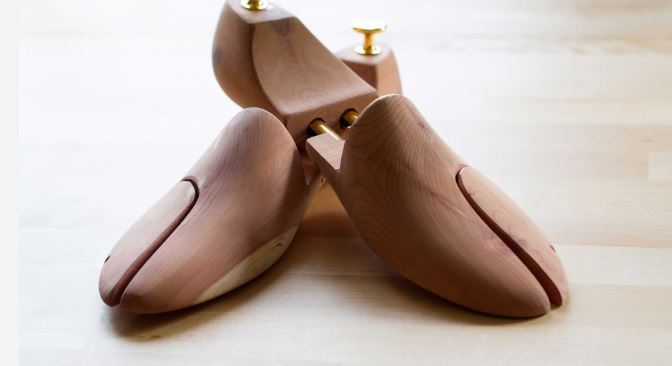
Step 6: Store Your Shoes the Right Way
Improper storage is one of the leading causes of premature wear in leather shoes. Heat, humidity, and direct sunlight can all alter the leather’s texture and color. Storing them thoughtfully is essential if you want your shoes to last through the years.
Start by keeping your leather shoes in a cool, dry place away from direct heat sources. Always use dust bags or breathable fabric pouches to protect them from dust and light. Never store leather shoes in plastic, as the material needs ventilation to stay healthy.
If you wear leather shoes often, avoid putting them on two days in a row. Give them at least 24 hours between wears so they can air out and recover their shape. Rotating between pairs will minimize wear and tear, ensuring each pair gets adequate rest.
Shoe racks, ventilated boxes, and individual compartments also help maintain order and protect your footwear from accidental scuffing.
Bonus Habits That Help Leather Shoes Last Longer
Beyond the foundational steps above, a few extra practices can enhance the longevity of your leather shoes:
- Keep them dry: If your shoes get wet, let them dry naturally at room temperature. Never use a hairdryer or place them near a heater, as high heat can cause leather to crack.
- Protect the soles: The leather upper isn’t the only part worth preserving. Have a cobbler apply rubber protectors or replace worn soles when needed to avoid damage to the foundation of your shoes.
- Touch up with a professional shine: Every so often, take your shoes to a professional shoeshiner. They can clean, condition, and polish your shoes with techniques that rejuvenate them beyond at-home care.
- Address scuffs quickly: Small scratches or scuffs are inevitable. Use a leather cream in the same shade as your shoe to cover imperfections before they deepen or worsen.
Final Thoughts
Taking care of leather shoes isn’t just about keeping them pretty—it’s about preserving their quality, structure, and performance over time. With a straightforward care routine that includes cleaning, conditioning, polishing, waterproofing, shape maintenance, and thoughtful storage, you can keep your leather shoes looking immaculate for years.
Whether you’re wearing them to a business meeting, wedding, or casual brunch, well-maintained leather shoes make a powerful impression. Invest a little time each month, and your footwear will continue to serve you in both style and function.
By developing these habits now, you ensure that your favorite leather shoes remain an enduring staple in your wardrobe—always polished, always comfortable, and always ready to impress.

FAQs
Why is it important to care for leather shoes?
Leather is a natural material that can dry out, crack, or fade if not properly maintained. Regular care helps preserve its appearance and durability.
How often should I clean and condition leather shoes?
Clean your shoes after noticeable wear or exposure to dirt, and condition them every few weeks or after several uses to maintain moisture and prevent cracks.
What kind of products should I use for leather shoe care?
Use products specifically designed for leather, such as leather cleaners, conditioners, and polishes. Avoid household cleaners or silicone-based sprays.
Read Also: How to Polish Shoes the Right Way
Can I waterproof all types of leather shoes?
Yes, but use a waterproofing spray formulated for leather. Always test on a small area first to ensure it doesn’t discolor or damage the material.
What’s the benefit of using shoe trees?
Shoe trees help retain the shoe’s shape, prevent creases, absorb moisture, and keep the leather smooth and odor-free.
How should I store leather shoes when not in use?
Store them in a cool, dry place using fabric dust bags or ventilated boxes. Avoid plastic storage and rotate pairs to allow proper airing.


